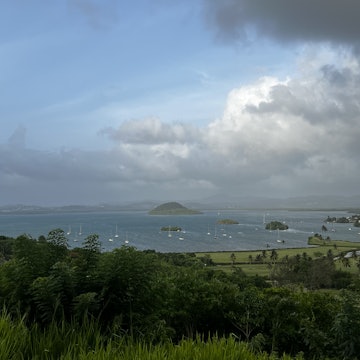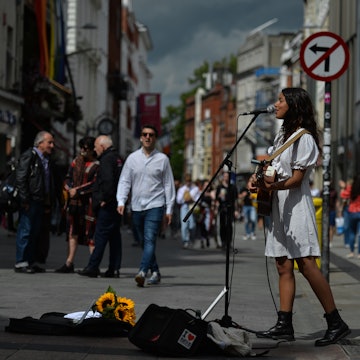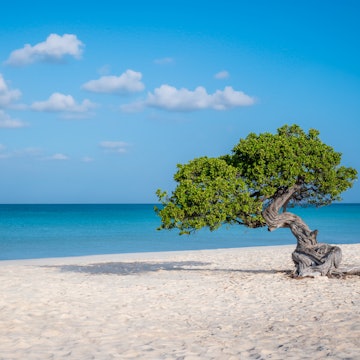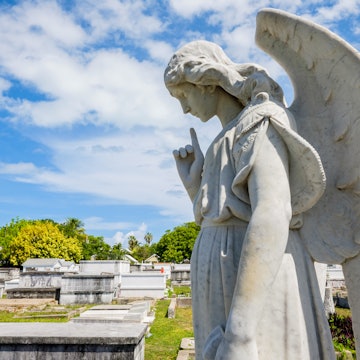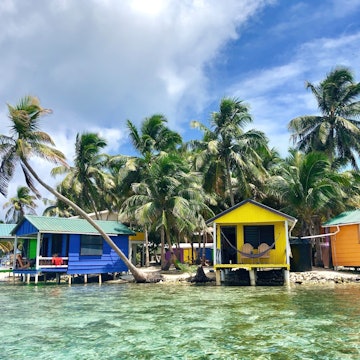
Visiting Rome during the Papal Conclave: what to see and how to get around

Apr 28, 2025 • 7 min read

Catholic clergy attend Holy Mass on on the second day of mourning for Pope Francis on April 27, 2025 in Vatican City. Christopher Furlong/Getty Images
Situated like a jewel set in the heart of Rome, surrounded by some of its most enduring religious and historic sights, the Vatican will command the world’s attention in the coming weeks.
When Pope Francis died on April 21 after a series of illnesses, a very specific set of events were set in motion in this tiny city state. As detailed and ceremonial as any royal transfer of power, the mechanisms to choose a new pope are secretive and, somehow, also deeply rooted in public observance.
If you’re headed to Rome in the coming weeks, you will likely encounter some aspect of the Papal Conclave, whether you are planning to observe and attend this event in St Peter’s Square, or are just sightseeing while it’s happening. Here’s more about this rare religious event and what you can expect.

What is the Papal Conclave?
A tradition that goes back to the 13th Century, the Papal Conclave is the process by which the cardinals — high-level Catholic clergymen — select a new pope. In most cases, as in this one, the conclave meets when a sitting pope dies or steps down. The death of Pope Francis while serving makes the current conclave somewhat different than the last, which was held when Pope Benedict XVI stepped down in 2013. The current conclave follows Pope Francis’s lying in-state at St Peter’s Basilica, and an official nine-day mourning period that began on April 26, the day of Pope Francis’s funeral.
The conclave is expected to begin on May 7, the Vatican announced Monday, when 134 cardinals will gather in the famous Sistine Chapel under Michaelangelo’s famous frescoed ceiling to choose a new pope. The chapel will be sealed, signaling that the cardinals are not allowed to leave until a new pope is chosen. Then, the voting begins. In modern times, the conclave has lasted for just just a few days — both Pope Francis and his predecessor were chosen after two-day conclaves.
The pope is chosen by secret ballot, and the process, infamous for its political jockeying, involves successive rounds of voting until consensus emerges. At the end of each day of the conclave, the cardinals burn their ballots. The smoke from this fire, which is mixed with chemicals, emerges from a chimney on top of the Sistine Chapel. Black smoke means the cardinals have not reached consensus. White smoke means a new pope has been elected.

What to expect in Rome during The Conclave
As the conclave meets, crowds of pilgrims, observers and media are expected to gather in St Peter’s Square in front of the basilica awaiting the news. All eyes will be on the somewhat plain-looking roof of the Sistine Chapel, which is visible to the right of the basilica dome if you’re facing it. The slim metal chimney is not a permanent part of the chapel and will be placed on its roof as the conclave begins.
If you are entering the Vatican during, before, or after the conclave, you can expect tight security and some closures of popular sites, including the basilica, the Vatican Museums and the Sistine Chapel. Check before you arrive, because these closures may happen intermittently and on short notice.
When I was in Rome immediately following Pope Francis’s death, the basilica and square were both open, though the square was busy with visitors and heavily monitored by Italian and Vatican police and military wielding very conspicuous weapons and even drone catchers. A large pen set up for media in the center of the square also impacted the usual flow of pedestrian traffic. If you’d like to join the crowd waiting in anticipation of that telltale plume of white smoke, there are TV monitors to assist.
There were also road closures around St Peter’s Square for vehicle traffic, but pedestrians were allowed to pass through a checkpoint that included a bag inspection. Many tour buses and tour guides pick up and drop off visitors in this area, so if you’ve booked a guided tour, check with your tour operator for any itinerary or meeting place changes. Closures or service reduction may also impact Rome’s public buses and metro in and around the Vatican, which can cause delays throughout the wider system.

Other events in and around the Vatican
Note that 2025 is also a Jubilee in the Catholic Church. This yearlong event, declared by Pope John Paul II back in 2000, is a celebration of faith and a call to religious practice and pilgrimage for Catholics. This year’s theme is built around the idea of hope, and celebratory events will be held throughout the world, but especially in Rome. While in Rome, you may see large numbers of Catholic pilgrims and clergy throughout the city, but especially in and around St Peter’s Square. While these sites are always places of pilgrimage and worship for Catholics, this additional event is also drawing large numbers of visitors.

How to avoid the crowds
The summer throngs have yet to arrive in Rome, but the city is busy. Restaurants are full and popular sites have wait times and require timed tickets. If you’re looking to get a sense of papal grandeur without braving the crowds at St Peter’s Basilica, consider visiting one of the other papal basilicas in the city. There are three of them, each dedicated to important church figures. Falling directly under the pope’s control, they were designed for maximum visual impact — to illustrate the greatness of God, but also to flex the wealth and power of the Catholic Church.
One of these basilicas, Santa Maria Maggiore, was chosen by Pope Francis for his burial. One of the first churches in the world dedicated to the Virgin Mary, it was founded in the year 434 and still retains much of its original structure, though it has been expanded and restored many times since. Francis’s tomb is now viewable to the general public, though you can expect a wait to get in.
The other two papal basilicas usually draw far smaller crowds and, like Santa Maria Maggiore and St Peter’s Basilica, are a delight to visit for their sheer scale and beauty. The Archbasilica of St John of Lateran and the Basilica of St Paul Outside-the-Walls are located away from central Rome and its famous ancient sites, but both are worth the trek for their gilded ceilings, centuries-old mosaics, grand colonnades and altars inlaid with precious stones.
At St Paul Outside-the-Walls (so named because early Christians were not allowed to be buried within city limits), the cloister with this small garden and spindly, colorfully tiled columns, is worth the extra few euros to enter.
Tips for visiting Rome
Expect streets, hotels, restaurants and shops in and around the Vatican to be busy during the papal conclave and throughout 2025 as the Jubilee unfolds.
One way to avoid the crowds is to base yourself in another neighborhood, away from the Vatican. Choose a hotel in another part of the city (The Beehive and its satellites are a longtime favorite of mine for value) and use public transportation, taxis or rideshares to reach the important sites. I had luck on efficient, affordable public buses, some of which were running on altered or abbreviated schedules, but still got me where I needed to go without much hassle or delay. At €7 for an unlimited daily pass, and €24 for an unlimited weekly, it’s affordable and easy, especially if you use a cell phone for routing and ticket purchases. Rome's buses and metros also now offer touchless ticket scanning — a big leap forward for this notoriously tradition-bound city.
Ask rideshares and taxis to drop you off a few blocks away from the Vatican and other major sites, and proceed from there on foot. It will save you time and save your driver some frustration.
If Rome is on your list this year and you want to avoid the papal conclave entirely, think about a trip in late autumn. The summer crowds will dissipate, cooler weather will make touring more comfortable, and the 2025 Jubilee will still be going strong.









